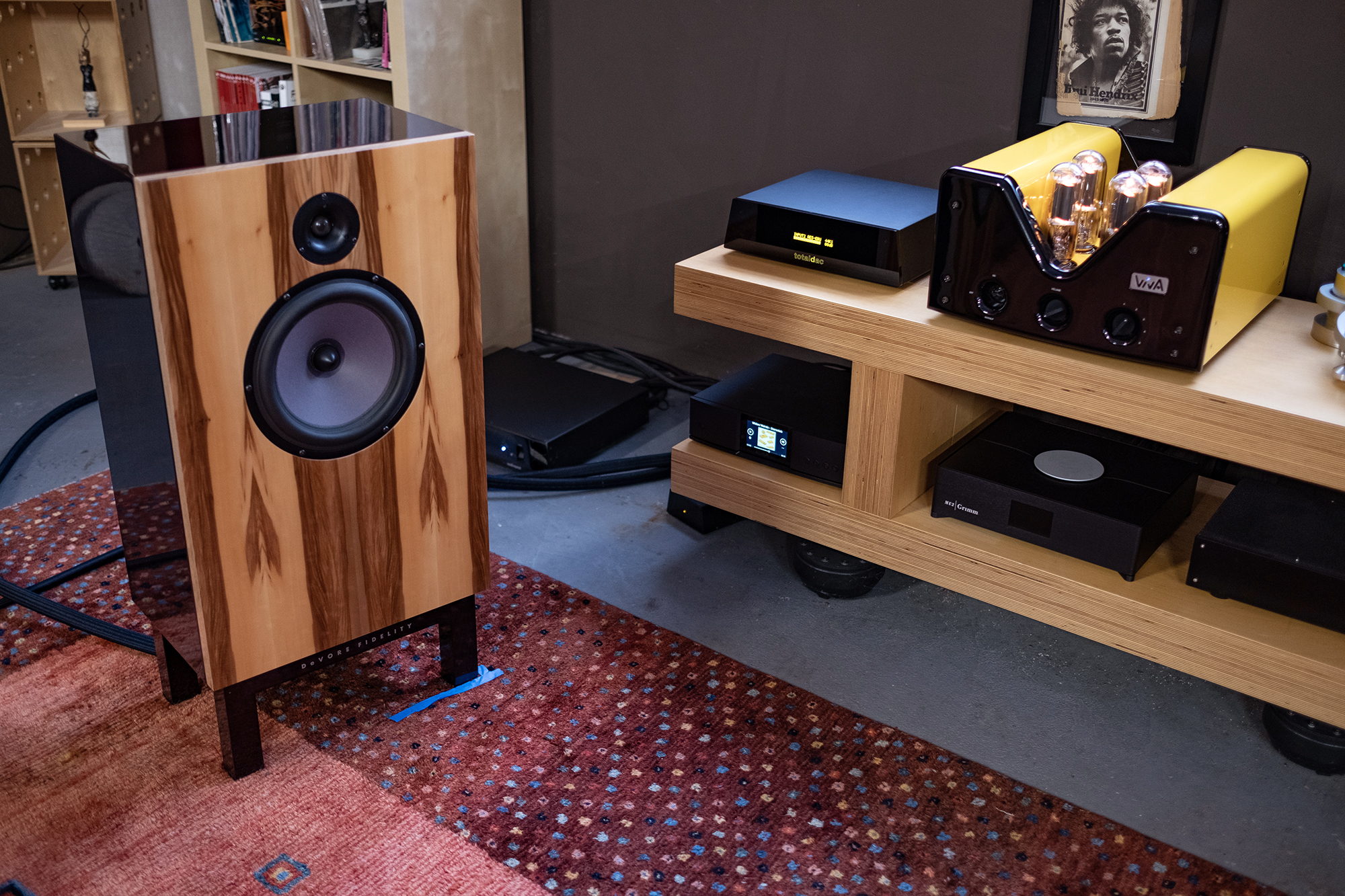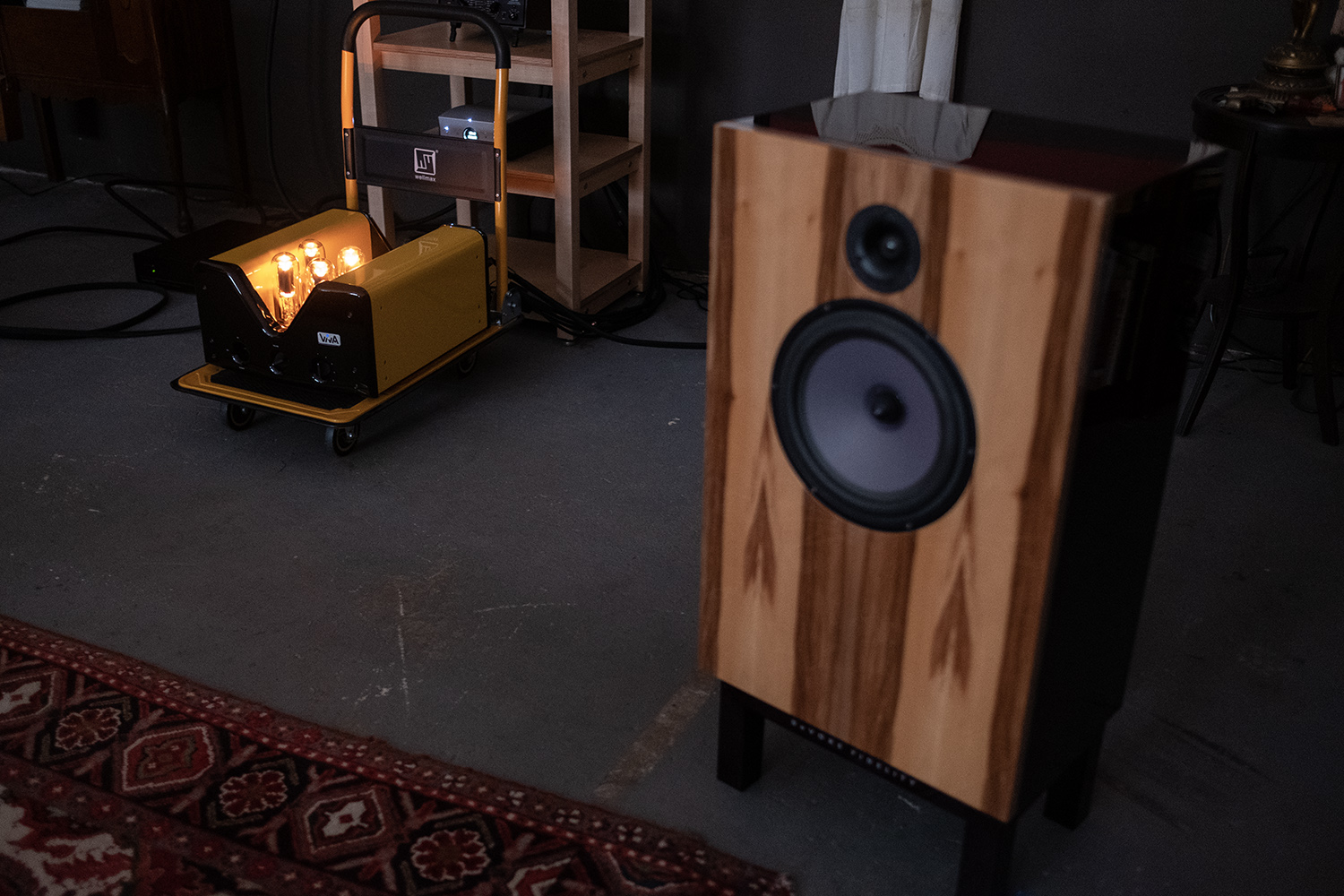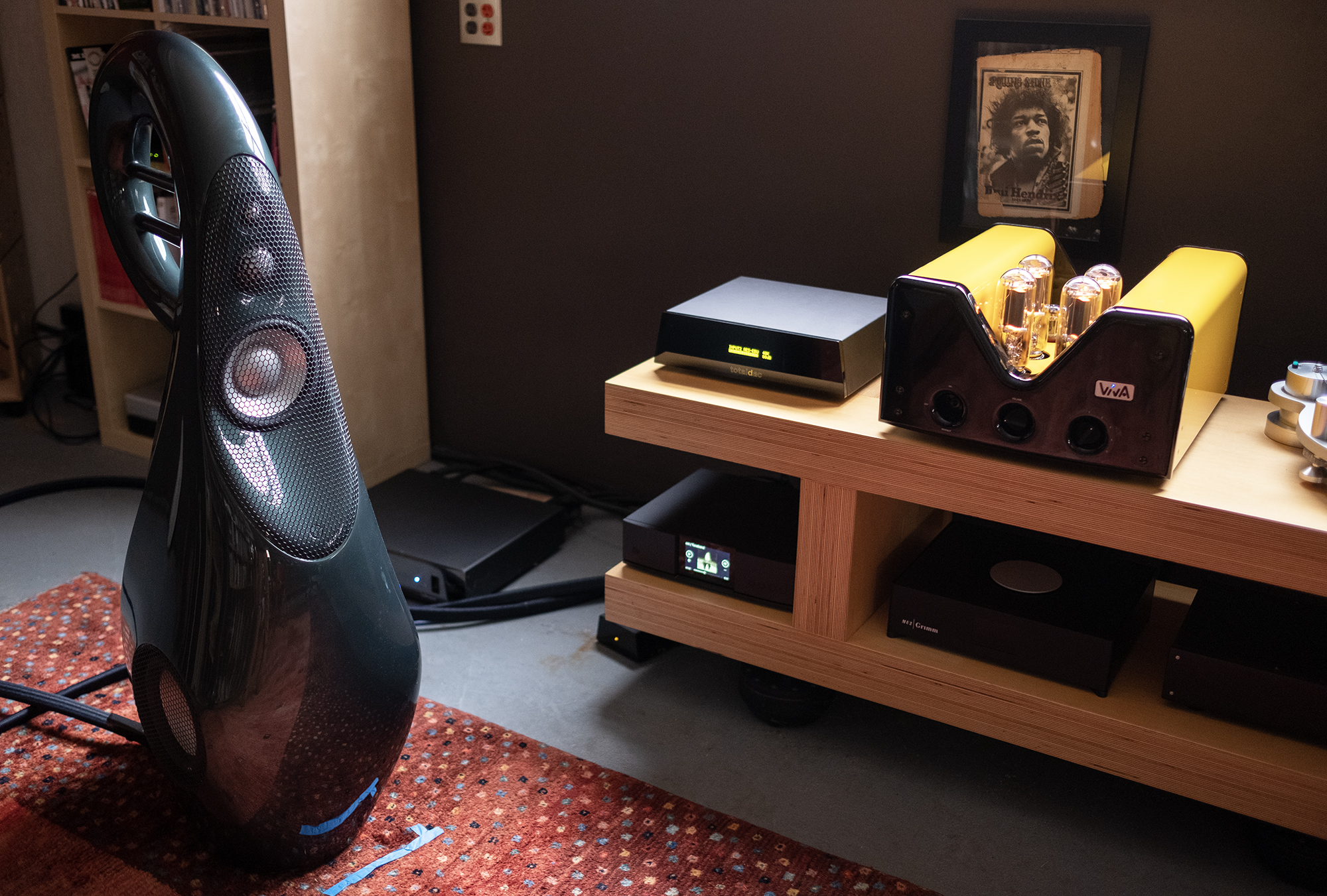
I can count on one hand the number of integrated amplifiers that stand above and apart from all of the others I’ve had the pleasure of reviewing. Here’s the list:
The Riviera Labs Levante (review), Soulution 330 (review), and the Viva Solista. Each, very much in its own way, offer performance that elevated listening to music on the hifi to new levels. I’m not talking about some objective measurable goal because those don’t exist in hifi if the experience matters more than an abstract ideal. I’m talking about music reproduction that made me sit up straighter and take notice of the music at hand in ways I hadn’t experienced before. And in each case—with the Riviera Labs, the Soulution, and the Viva—the differences were as plain as knights and dates.
The fun part as a reviewer comes about when trying to put the experience, the human reaction, the outcome, into words. Some people like to scoff at these attempts, making fun of flowery language or some other pigheaded faux machismo as if the experience, the story, matters less than some binary outcome (good/bad). These same men, it’s always men, typically can’t write worth a damn which makes me wonder how much literature they’ve read so I suppose I can understand why reading words that tell a story as opposed to offering a single directive (buy/don’t buy) confounds the spec- and measurement-first crowd like peanut butter stuffed into a rubber toy.

The Viva Solista is a single-ended Class A integrated amplifier that relies on two pair of Psvane 845 triodes to produce its 22 Watts of output power. Pairs of 6C45i triodes and Tung Sol 6SN7GTs offer input and driver functionality, that latter driving the big, bad, directly heated 845s. There is no negative feedback employed in the point-to-point wired Solista. Viva, the company, was founded in Vicenza, Italy in 1996 by designer Amedeo Schembri and I don’t recall exactly when or where it was I first saw and heard one of his amplifiers but I remember thinking, “I’d love to get one of those home” (it was long before the Barn). And as is the case with most classic hifi, I read, and re-read Art Dudley’s review [footnote 1] of the original Solista from 2005 in the pages of Stereophile, which made me even more eager to hear one.

The Solista sports 4 single ended inputs (1x XLR, 3x RCA), 1 Direct input which bypasses the active preamp stage, what I assume are “S” Sub Outputs (1x XLR, 1x RCA), and a pair of speaker binding posts. The included black aluminum remote was designed for people who hate complicated remotes, people like me, as it offers but two controls—volume up and the other way.

To my eyes, fingers, and tastes the Viva Solista is a joy to behold and use, its clear deviation from a box is a refreshing change. The front face offers three same-sized controls for power, volume, and input.

I also ended up loving that optional yellow finish. Three things to keep in mind about living with the Solista—845s run hot, it’s 20-inches deep, and weighs about 77lbs.

I paired the Solista with the Barn resident DeVore Fidelity O/96 (review), a love affair if ever there was one between an amp and speaker, the recently reviewed Volti Audio Rival SE (review), and Vivid Giya GIYA G3 Series 2 (more info). And I can tell you the Viva drove all of them with superb control from bottom, and oh what a bottom it has, to top with speculator sunrise and sunset colors balanced with just the right amount of clarity and control to make the experience of listening to music feel. . .vital.

The review sample Auralic ARIES G2.2 (more info) fed the Barn resident totaldac d1-unity (review) for most of the Viva’s stay on the A-Side, while the Mola Mole Tambaqui (review) streamed and DAC’d on the B-Side. All cabling and power conditioning came courtesy of AudioQuest while all of the gear sat on a Box Furniture ‘Fallen A’ rack on the A-Side and MS4M (4 shelf MAPLE] Rack on the B-Side (full system details).

You may have read about my recent adventures into the land of playing 78s, where the Viva Solista powered the DeVore O/96 for those proceedings. While prepping the Barn’s B-Side for a small 78 listening party, I put the Viva Solista to work with the DeVores and the Mola Mola Tambaqui to warm things up while I went about the cleaning up the place part. While cleaning up is not among my favorite things to do, having the place cleaned up is a very satisfying result. Funny how that works. In any event, during the dusting and pillow fluffing Antony (now Anohni) & The Johnsons “One Dove” from their album The Crying Light came on so I sat right down on the comfy couch to focus and I was greeted with more of Antony & The Johnsons than I’m accustomed to coming out of the O/96.
This song is one of my favorite test tracks and has been for many years so I know it very well, as well as my backside knows that comfy couch we’ve owned for near 20 years, so when I say I was hearing more musical information coming out of the O/96, a speaker I know very well, that’s saying something. Namely, the Viva Solista was digging into the signal it was receiving from the Tambaqui and transferring more of it through the DeVores than I’m used to. This played out by offering greater separation during the denser parts that come in more than half way through this lovely song in turn telling me more about the music being made. The overall sound of each element, piano, strings and woodwinds (arranged by Anohni), and Anohni’s soul-stirring vocals felt full, fleshy, rich, and all too human. In a word, sumptuous.

Once drawn in to this level of performance, and I mean that both ways—hifi and music—I was off to the favorite track races to hear what new things this stunning system powered by the Viva Solista had to tell me about music I knew well. I love when this happens.
But when it comes to perpetual daily pleasure, I prefer to seek out new, too. Cowboy Sadness’s Selected Jambient Works Vol. 1, released earlier this month on People Teeth, sounds like what the album title suggests, more or less, spilling out into the real world streamed from Qobuz through the Auralic AIRES G2.2 into the totaldac d1-unity on to the Solista out through the DeVore O/96 and into the Barn with ethereal big space ambient-inspired beauty. This is 57 minutes of sound waves distilled down from over 20 hours of recordings made over 4 years so while this music gently washes out of the speakers and over the listener, it feels as purposeful as nature. The band is made of Peter Silberman on Baritone Guitar & Synth, David Moore on Rhodes & Farfisa, and Nicholas Principe on Drums & Synth and together they create soundscapes worthy of inspiring countless dreamy journeys.
With the Viva/DeVore combo, Cowboy Sadness filled the Barn with otherworldly otherness, clouds of sounds whose origins would make finding the DeVores blindfolded more difficult than pin the tail on the donkey. Effortless, big, and superbly defined in space, the Viva Solista can plumb the depths of ambient, or Jamient, to breathless heights.
Bar Italia’s latest, Twits was released on Matador back in November and it’s another crunchy delight from the London trio. For the end of the Viva’s Barn stay they got to play with the Vivid Giya GIYA G3 Series 2, speakers I’ll have a lot more to say about in that review but one aspect of their performance I’ll highlight here is the GIYA G3’s ability to act as sonic magicians, very much like their smaller sibling the Kaya K45 I reviewed last summer, in that they leave no trace of themselves in the music that flows through, turning into pure sound energy in room. And the Viva Solista positively lit up the GIYA from bottom to top with that evenhanded control and super saturated sound that makes music feel dimensional and alive. This pairing also showed off the Solista’s speed, as did the Volti Rival SE and DeVores, but the Vivid GIYA have their own kind of deftness that escapes from their cabinets with effortless grace.

From my review of the Volti Rival SE:
My favorite, by a wide margin, dance partner for the Volti Rival SE was the Viva Solista for the its stunning control of that 15” woofer coupled with a rich and highly refined sound (more on that in the forthcoming Viva review). And I mean highly refined.
This wonderful combination of control and refinement (and richness) traveled with the Viva and through each speaker it got to play with in Barn.
Luigi Nono’s Como una ola de fuerza y luz (Spanish for Like a wave of strength and light) is a storm of sound for soprano, piano, orchestra, and magnetic tape that came about through Nono’s then budding association with pianist extraordinaire Maurizio Pollini and conductor Claudio Abbado. But the accidental death of Chilean activist Luciano Cruz, whom Nono had met during a 3-month visit to Chile, occurred during the development phase, turning this planned collaboration into an homage, a memorial to Luciano. I’m partial to the Deutsche Grammophon release recorded in 1977 that features Pollini and Abbado and still have the CD I bought at Tower Records on Broadway in the 1980s, a time when I listened to contemporary classical music nearly exclusively.

This is wildly inventive music in every way, and Nono was as fascinated with sounds produced through tape and electronic manipulation as he was with the stunning musicianship of Pollini et al. Como una ola de fuerza y luz explodes in space with the each element— Pollini’s piano, soprano Slavka Taskova, chorus, tape, and orchestra—in a sonic battle waged in sound. With the Vivid/Viva combo at the helm, listening through this fury that begins in the lower registers and builds all the way to the top of the piccolo range is as physical/dynamic and emotional an experience as I’ve had from recorded music. This system was entirely capable of capturing this beast of a recording and re-presenting it in Barn with all of its power and sorrow in tact. Stunning.

Regardless of the speaker—DeVore O/96, Volti Rival SE, Vivid GIYA G3 Series 2—I felt like the Viva Solista was mining the richest, fullest, and most highly resolved sound from each. With experience of this same amp in different system settings I can confidently point to its ability to offer a huge, dimensional, rich, and rewarding music-inspired experience for days and weeks on end. The Viva Solista is a veritable champ at delivering a fully fleshed out physical form of music in Barn that felt richer and more present than all but a few other integrated amplifiers I’ve had the pleasure to live with. For me and my preferences, the Solista cut through the gauze of reproduction placing me as far inside any music I cared to play as easily and directly as I’ve experienced.
The Viva Solista proved to be among a handful of integrated amplifiers that offered exceptional and true standout performance well above and beyond every other integrated amp I’ve had the pleasure of living with. The Solista’s particular strengths, in addition to superb control, drive, and resolution, is its ability to present recorded music in living breathing fully fleshed out form, making the experience feel more like a communion than passive listening. Bravo! indeed.
1. here’s favorite quote from the conclusion of Art Dudley’s review of the Viva Solista:
And now I’m wondering: How in the world could any sane person consider it wrong to buy whatever it is they enjoy, assuming that they can afford it, and that neither their buying decision nor the product itself will bring harm to anyone? Count me among the ones who think it’s almost infinitely wronger, not to mention stupider, to do otherwise.
Viva Solista Integrated Amplifier
Price: $29,500 +10% for custom colors
Company Website: Viva Audio
US Distributor Website: High End by Oz
Specifications
Dimensions (W x H x D): 430 x 250 x 520 mm
Weight: 35 kg
Single-ended integrated amplifier
Triode tubes
Tube Complement: 2x 6C45Pi, 2x 6SN7GT, 4x 845
Zero negative feedback pure class A operation
Real point to point circuitry
Four inputs, one direct input
Palladium plated proprietary solid copper binding posts


